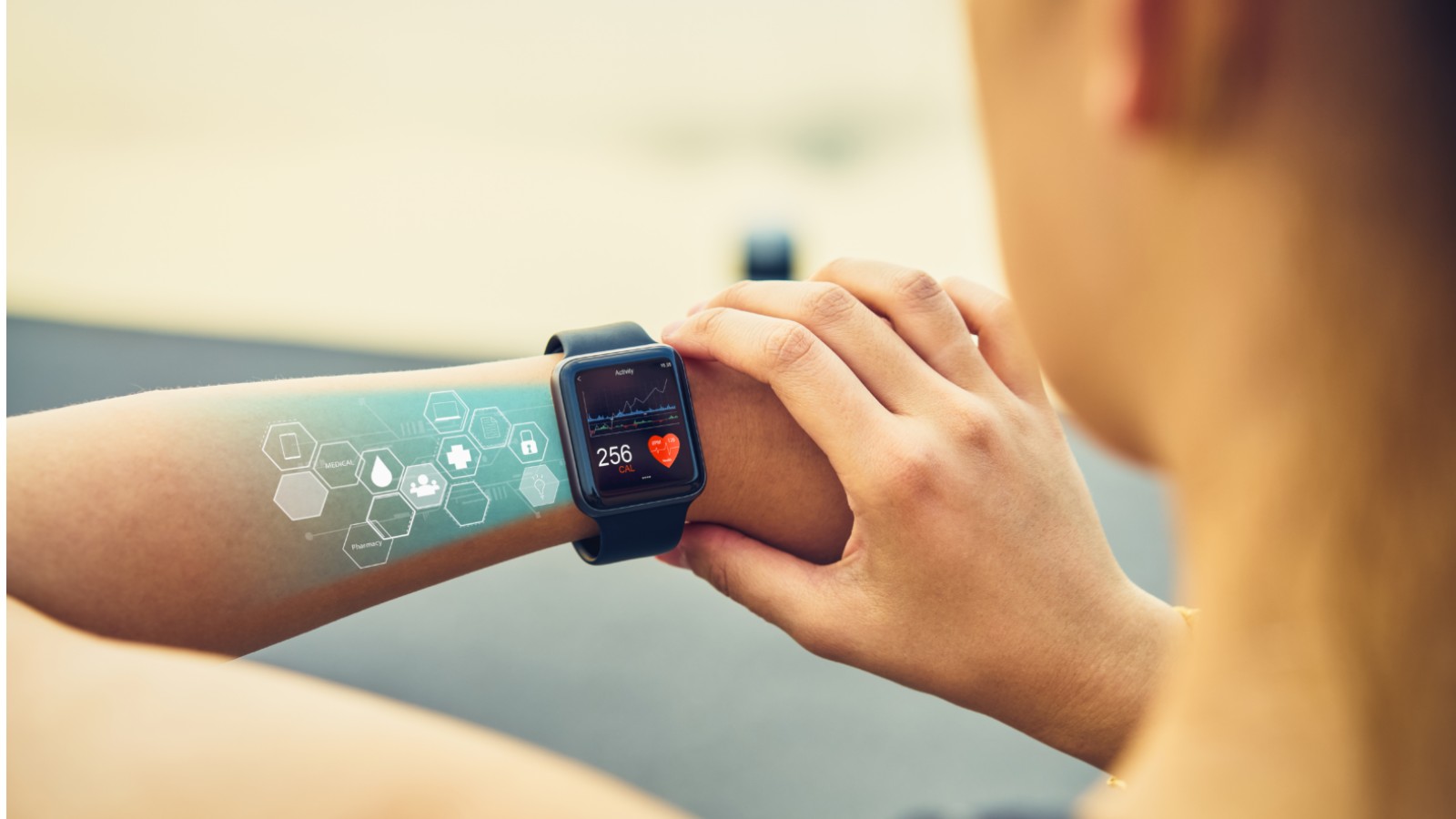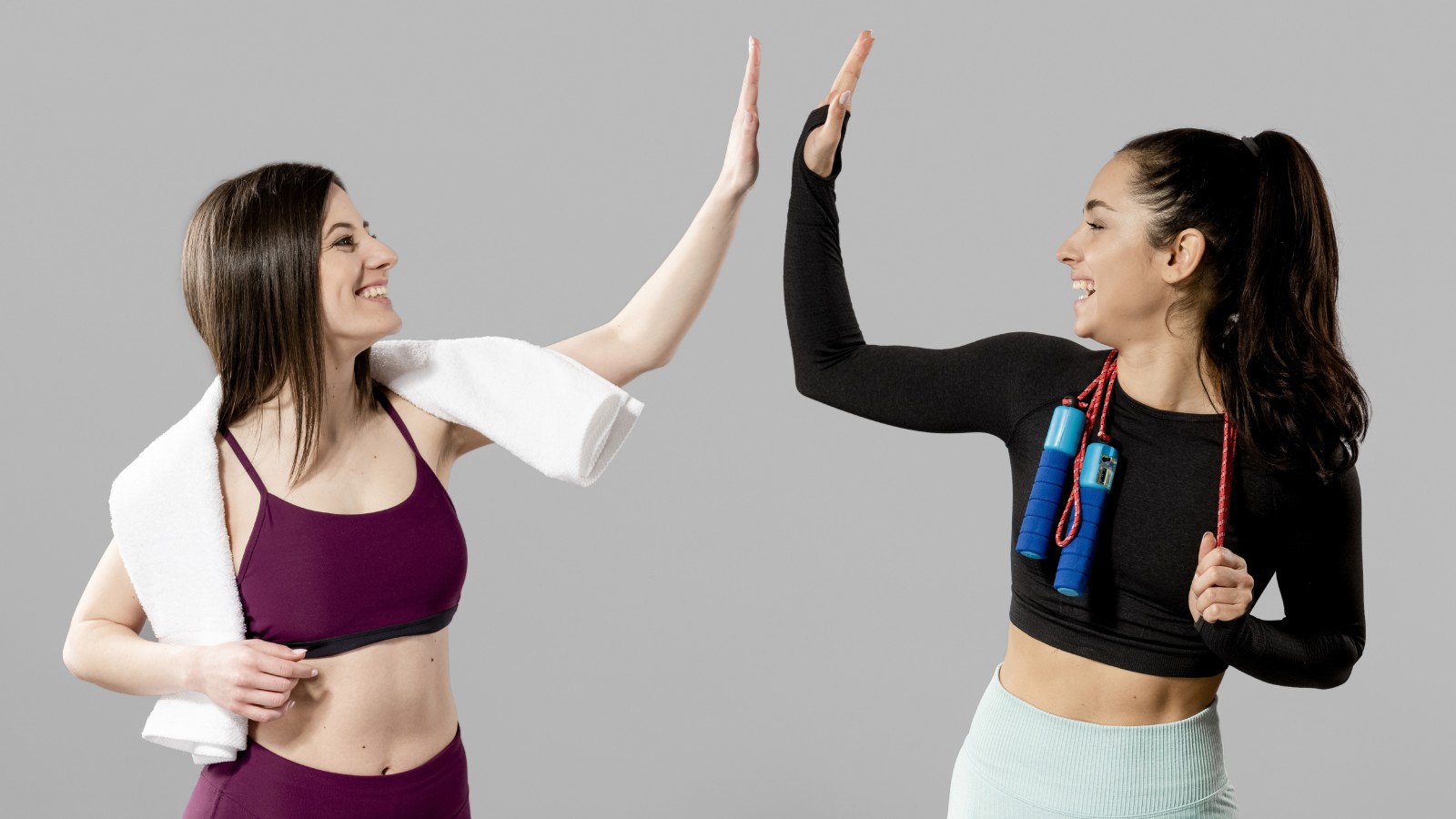There are two main types of motivation that can be used to positively motivate a participant to success as a part of an exercise program, these are:
-
Intrinsic - Internal and driven by the participant. They will be undertaking the activity because it is personally rewarding and they are enjoying themselves or achieving personally set goals.
-
Extrinsic - External and may be provided by the fitness instructor or other type of influence. The use of rewards and in some cases negative reinforcement are types of extrinsic motivation. The individual will alter their behaviour because of the desire or need to attain the reward that is on offer or avoid the associated negative consequences.
Different personalities tend to gravitate towards either intrisic or extrinsic motivation. However, this is not to say that a person is always one or the other, certain activities may be motivated differently in the same individual and it is possible for a person to be simultaneously intrinsically and extrinsically motivated about different situations.
Other components of motivation include:
-
Direction - Essentially refers to the goal that an individual is working toward. The goal keeps the client focussed, forward thinking (ie. direction), and thus motivated. Goals (or directions) may be set by the individual (intrinsic) or by the fitness professional (extrinsic). For example, a client may be wishing to loose two clothing sizes so they can fit into a formal outfit for an upcoming event.
-
Intensity - Refers to the level of effort an individual is willing to apply to attain their goal/s. People tend to display higher levels of intensity if they perceive an outcome being readily achievable. For example, the client who is trying to loose weight for the formal event may be very motivated to achieve this goal because the event they wish to attend is in four weeks, therefore they are willing to work at a higher rate of intensity during this time.
-
Persistence - Is the duration of time inwhich a person is willing to apply effort (intensity) to work towards their goals (direction). For example, once the client has lost the desired two clothing sizes, attended the formal event, and received the 'reward' of looking amazing in their outfit, they may or may not be willing to continue this behaviour and maintain or further improve their body composition and overall fitness levels.
When discussing client goals, you should attempt to identify what type of motivation they are exhibiting (intrinsic or extrinsic), as well as the specific goal that is motivating them to undertake the activity, how committed they are to achieveing this goal, and also if they want to make life-changing ongoing behavioural changes once the initial goal is achieved. Adapting your communication style depending on these factors will help. For example, someone who is intrinsically motivated may not need as much verbal praise or tangible rewards, and may not appreciate grand public displays of achievement celebration. Whereas, extrinsically motivated people may thrive on these behaviours.
Everyone is motivated in different ways. There are various motivational strategies that can be used to promote exercise behaviour change, and aligning the most appropriate method with individual clients is part of the responsibilities of a good fitness professional and will result in an increased overall success rate and client satisfaction levels:
An exercise contract is a written agreement between a fitness trainer and a client and seeks to address the certain behaviours within a specified time frame, thus helping to ensure the success of the trainee in reaching their exercise goals. Some people require the formality of a written document to keep them motivated. Specific outcomes, time-frames and rewards are what encourages them to participate regularly.
Prompts are a method of using words, visual signs or notes, technological devices, and actions to remind a person to complete a task or participate in an activity. Ultimately prompts help to change their behaviour and establish routine habits.
Using certain words at the commencement of a fitness class, sending out reminder messages, or leading by example can effectively prompt the participant to respond and react in a certain way.
For example, regularly reminding clients to stretch before and after exercise or having a visual sign that reminds them that towels are mandatory when using resistance machines.
Reinforcements to an exercise routine are reward systems set in place to help participants to complete their training routines in order to reach their exercise goals. Reinforcements can be divided into three categories:
-
External rewards - Tangible rewards that are awarded (usually be a third party) each time a goal is reached or commitment is kept. For example, prizes, points, and praise etc... Because these rewards are usually allocated by a third party they can also be referred to as positive reinforcement.
-
Internal rewards – Intangible rewards that are realised each time a goal or an exercise commitment is kept (this is a personal feeling of satisfaction and achievement). For example, achieving a personal best, attaining a personal goal, improving mental and physical well-being.
-
Negative reinforcement – Punishments that are given each time a goal is not achieved in the planned timeframe or commitment is not met. For example, financial penalties, criticism, removal of privileges. Note: This form of reinforcement is not recommended. Negative reinforcement is best reserved for genuinely bad behaviour such as rule or law-breaking, extreme rudeness/aggression etc...
The appropriate type of reinforcement will depend on the participant's personality and your relationship with them. For example, negative reinforcements may be effective for a professional sports team (issued by their coach) but are probably not appropriate for the young mother who is attempting to loose her 'baby weight' after pregnancy.
Providing the client with a range of choices in regards to exercise will improve the success rate. This may be the choice between two types of exercise equipment, time of day in which the session is scheduled, or intensity level adjustments. People who have a feeling of control and/or input regarding how the decision was reached are often more satisfied.
Feedback is a great tool to promote changes to exercise behaviour as it can be constructive or motivational and can be used to shape the way that the participant responds to the program. Some tips to be aware of:
-
Be discreet - Some types of feedback may be embarrassing for the client. If possible take the client to a private room or area away from others, if this is not possible then lower your voice.
-
Be sincere - Overindulgent or animated feedback will not be appreciated by many people.
-
Regularly offer feedback - Don't wait until a formal review/appraisal date, offer small chunks of positive feedback on a daily or sessional basis.

Rewards for good behaviour and not for unwanted behaviour types is a form of conditioning that reinforced good behaviour and trains the participant to focus on these types of behaviours.
Rewards may include:
-
Verbal praise.
-
Change in activity.
-
Short rest periods.
-
Water breaks.
Rewards may also be larger in scale if the achievement is a monumental one. Choose an appropriate reward for the client and also for the activity or goal being attempted. Discuss rewards with them.
Self-monitoring should be encouraged in participants as often the harshest critic of performance is a person themselves. It is important that participants are encouraged to consistently observe and rate their own behaviour; this can result in positive change for a person.
There are a variety of apps and devices which can help with self-monitoring. Counting daily steps, measuring heart-rate, tracking distance and elevation, and recording exercerise sessions.

However, be aware of self-destructive behaviours which are unhealthy, if a client is unnecessarily tough on themselves or extremely despondant after not achieving a goal then they may require additional support or in extreme circumstances a referral to a medical professional or psychologist.
People need and thrive on social support, and this can come in the form of numerous types of social networks including family, friends, colleagues, mentors, and also the support provided by fitness professionals. When clients know that people care about them and have their best interests at heart it help them in maintaining a positive outlook and good mental health.
A decision balance sheet is a tabular method of recording and analysing the pros and cons of any situation and can be used to aid in the focus and motivation of clients.
The physical setting that the exercise takes place in can create a motivational or de-motivational environment and can result in a mindset change for the participant. It is important that the physical setting has:
-
Natural light - Natural light helps in the production of vitamin D, improves circadian rhythms and sleep patterns, assists with the telling of time, and improves mood.
-
Adequate illumination - Along with natural light there may also be a need for other illumination, especially if concentrated tasks are required like reading or writing. In these cases, the lighting must be bright enough to not cause eye strain without being too harsh on the visual environment.
-
Aesthetically pleasing - A clean, uncluttered environment with a logical floorplan and plenty of space for individuals to exercise without crowding is required.
-
Good air circulation - Well circulated air helps to regulate temperature, prevents the build-up of particles and mould, and makes breathing easier. This can be achieved by either allowing fresh air to enter a building via doors or windows, using air conditioners or fans, or moving an exercise session outdoors.
Exercise variety can result in behavioural change by:
-
Reducing boredom and resentment.
-
Creating a sense of fun and adventure.
-
Providing new challenges.
Behavioural attitudes towards exercise can be improved if discomfort and injury that the participant associates with exercise is minimised. Teaching them the importance of correct technique, the value of flexibility exercises, and avoiding overexertion will all help to minimise discomfort and injury and thus will mean that exercise is associated with positive thoughts and memories rather than negative pain-related feelings.
Exercise groups can act as a social network for some people, providing support, conversation, and inspiration. Friendly competition can also be utilised as a means of motivation.

Exercise should not be a chore, as this has negative connotations and will be avoided if possible. Different people enjoy different things, it is what makes us unique and interesting. Some people love high-impact aerobics, others prefer walking regularly as their exercise routine.
Discovering what a client enjoys doing and moulding the exercise program to suit will result in a higher success rate. Individual preferences can be ascertained through:
-
Surveys.
-
Interview questions.
-
General conversation.
-
Feedback forms.
-
Client reviews on public forums.
Periodic fitness and health assessments/appraisals can be used to create behavioural and motivational change, both intrinsic and extrinsic, in participants. Progress charts can be used for recording statistics such as body composition measurements and they provide a quick visual reference of overall achievement.
Achieving a result and having it officially recorded helps to provide a visual confirmation of progress. Individuals will have an intrinsic boost to motivation as they have achieved a personal goal and the proof of their success is clearly available. Fitness professionals also have the opportunity to boost extrinsic motivation in individuals by using the appraisal process as an opportunity to provide tangible rewards such as praise, recognition and even prizes.
Regular fitness appraisals should be scheduled approximately every three to six months. Too frequent and they will not be as motivating because real progress will not be evident yet, too far apart and enthusiasm may wane without the necessary rewards that an appraisal can offer.

